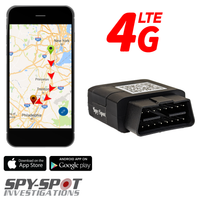What is an OBD2 port
OBD II Ports have been introduced in all vehicle models since 1996 in the US. ‘OBD’ stands for ‘On Board Diagnostics’. It is a computer system inside of a vehicle that tracks the vehicle's production. When a check engine light comes on your screen, you can use the OBD to figure out why it's there and what the issue with your vehicle is.
What is it used for?
OBD II ports are important and have various uses. OBD ports are especially useful for mechanical repairs. Mechanics log into the car’s history to run all sorts of tests to make sure everything is working properly. Thus the OBD is convenient since it can notify us of any arising problems or maintenance that the vehicle may need done.
How to locate it?
The OBD port in a vehicle is usually located in the dashboard near the bottom left of the steering wheel. If not located near the driver's side, it may be anywhere near the steering wheel, or facing the passenger seat on the dashboard, or near the gear stick. A picture of where your OBD II might be is included.
What can OBD detect?
OBDs can detect the vehicle’s vital signs; from fuel systems, to engine misfires, emission control systems, vehicle idling, speed controls, computer and transmission systems, and many more like categories related to the vehicle’s integrity and safety, like airbags, tracking, engine performance.
Is there a difference between OBD and OBD2?
It is only logical that newer models feature improvements from their predecessors. Hence, the OBD II port works better than the first OBD model. It can do a whole lot more, such as monitor wider ranges of the engine, emission control systems, and several other systems in a vehicle. Whereas the OBD only monitors the emissions control systems, the OBD II provides ‘trouble codes’ and more detailed information from the diagnostics system.
FAQ
Do all cars have an OBD2 port?
Yes, all vehicles have an OBD II port. Vehicle models since 1996 are required to have an OBD II port to meet USA’s standards. Safety regulations demand an OBD in order for vehicles to stay safe and functional.
Is it OK to leave OBD II plugged in?
Yes, It is okay to leave your device plugged in. It will go into sleep mode when the vehicle’s ignition is off, it will however consume but a small amount of power every so often to check in.
Does OBD drain the battery?
When plugging in an OBD Tracker it will of course need a power source. And yes, the power it consumes is from the car’s battery. Anything connected to a vehicle takes power from the battery causing the battery to gradually drain a little quicker than usual. But the OBD won't completely drain your battery since it barely consumes any significant energy to operate.


